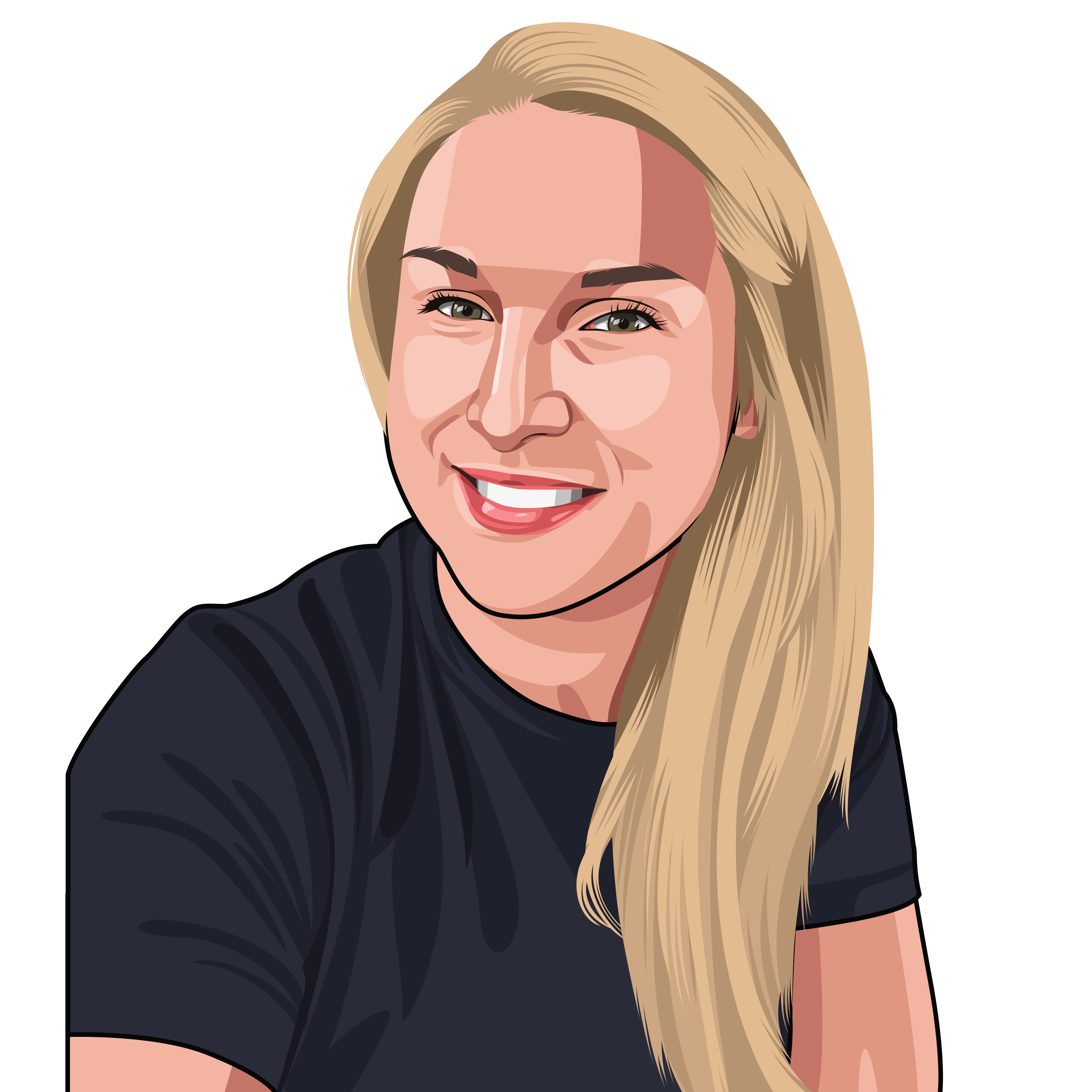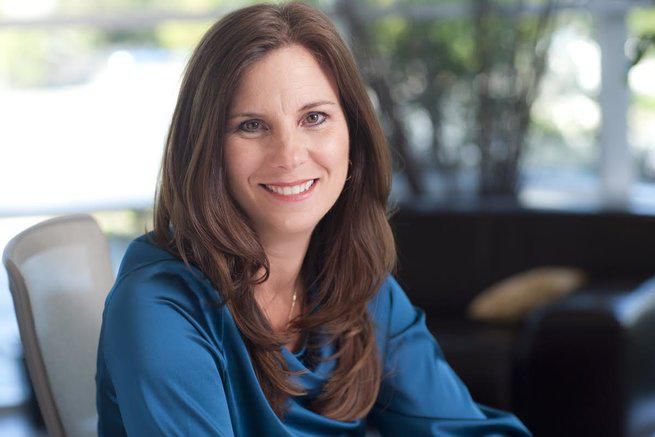“The goal is not to eliminate meetings. The goal is to eliminate bad meetings.”
Dr. Steven Rogelberg is on a mission to help the world have better meetings. As a meeting scientist, he’s seen an explosion of interest into how to have better meetings in a digital age.
Dr. Rogelbers says it starts off by seeing yourself as a steward of other people’s time. “Let’s not hold people captive to attend meetings just because we can easily access their calendars.” When you steward their time, you’ll make sure you are getting the most out of the time that you have.
Fighting fatigue
Dr. Rogelberg says that people get drained during the day not simply because they are in digital meetings all day. But they are in bad meetings. And they are in the same kind of bad meetings.
One way to fight the fatigue is to have different types of digital meetings. He recommends taking a walk during 1:1 meetings to get your body moving and engage a different part of your brain and body.
The surprise of silence
One of the most interesting suggestions Dr. Rogelberg makes is to use silence during meetings. We think of silence being a very strange and awkward time. However, silence can be a great way to allow everyone to do some quiet brainstorming, while still being aware that others are working as well.
The use of silence opens up many ways to be more inclusive of different types of people. In most meetings, it is the loud, outgoing, and verbal processors who dominate. Digital conversations make it natural to find ways to include others as well.
The art of the close
Dr. Rogelberg ended by talking about the most important part of the meeting – the closing. He said we need to spend a lot more time thinking about how we close a meeting. Too often, it’s just, “Well, I need to run to another meeting, so thanks everyone.” We need to be able to document the tasks and decisions that happened during a meeting and make sure that everyone is clear about what happened. Otherwise, we’ll have to have the same meeting again next week.
Links
Dr. Rogelberg’s book: The Surprising Science of Meetings
Well, hello everyone. Welcome back to The Digital Workplace podcast. Today our guest is Dr. Steven Rogelberg. He is the Chancellor’s Professor at UNC Charlotte. He is also the author of ‘The Surprising Science of Meetings’, and the recipient of the Humboldt Award for his research on the science of meetings. We love talking about meetings here on the digital workplace. Dr. Rogelberg, thanks for being on the show.
My pleasure. Happy to be here.
Great. So, before we get started, we have a lot of things to cover. But I want to make sure that we are talking to a real life human as we get the show going. So, your check-in question, your captcha question is, what is the coolest thing you could pull out of a crackerjack box?
That is an easy one. So, what I want to pull out of my crackerjack box is a new mountain bike. Now granted, that will have to be a big box of Cracker Jacks, but still, given it’s a hypothetical question, I’m going to go for the best prize possible.
Fantastic. I feel you got to have the golden ticket that comes out, then it makes it feel like, oh, wow, this is really special. Whatever it is, it could be like for $1 off or something, but if it was a golden ticket, it feels cool. Excellent. Well, you are a man of many talents, but you’ve decided to spend a lot of your time researching, studying meetings. How did you get involved? Why did you pick meetings above everything else you could study?
As an organizational psychologist, I’m drawn to study topics at work of significance, of meaning. I’m drawn to topics that cause employees frustration, as well. And I loved the thought of conducting research to not only better understand the topic, but also to seek a path forward. And that’s really what motivated me to start studying meetings 20 years ago. Because really, when you think about meetings, right, employees are spending an incredible amount of time in them. But at the same time, we know there’s a great deal of frustration and fatigue.
Yeah. I feel it’s the thing we love to hate, like we always hate meetings. I’m in so many meetings, I hate being in meetings all day long. Yeah, we’re always scheduling them. It’s not like we’re going to stop anytime soon. There’s that love hate relationship we have with it, right?
It’s true. But a world without meetings is much more problematic. Meetings are really where organizational democracy takes place, right? We need meetings for communication, coordination, cooperation, and consensus decision making. Meetings are where this happens. So, the goal is not to eliminate meetings. The goal is to eliminate bad meetings.
And I feel the transition into this more digital world that we’re in, to me, it just highlighted the bad meetings that were there. You could still have great digital meetings, but the bad ones were just so obvious in digital spaces. Like if you’re sitting in a room, somebody walks in, they haven’t prepared for it, they don’t have an agenda, they’re just like, ‘Hey, what do you want to talk about today?’ You can kind of get through that, and it’s bad and it should have been better, but it is painful when you’re on a Zoom call and the same thing happens, right?
Sure. Absolutely. As a meeting scientist, COVID has been very good to me. This is from my own perspective. It’s taken this topic that I’ve been studying, and it has just elevated interest in it. I do probably a keynote each week for an organization, how to move the dial on their meetings, leveraging evidence in science. Meeting problems existed before COVID. It’s just that the appetite for fixing them is so much higher right now.
Wow, that’s a great way to put it. Why do you think it was so low before? Why do you think we were so willing to put up with bad meetings?
Organizations thought of bad meetings as just the cost of doing business, and that is just so inappropriate. Meetings can truly be a competitive advantage for an organization, right? If you’re the organization that gets their meetings done well, effectively, and efficiently, think about how that differentiates you from so many other organizations. So, I think with the pandemic, we just became much more sensitive to meetings, because obviously, the digital meeting became the way of life. And fatigue due to meetings has existed for a long time. It’s not a new phenomenon, but it was the interest in this notion of fatigue that just incredibly increased during the pandemic. So, basically the pandemic just provided a spotlight on this common activity that we really took for granted pre-pandemic.
Excellent. Well, the topic of meetings is something that a lot of our audience has looked at before with different angles and articles and things. I’m going to jump into some more of what I’ll call advanced questions about meetings. So, let’s start off with the idea of setting ground rules or meeting norms or working agreements about meetings. There’s lots of potential topics you could put in there about like, okay, do we always have video on, or we always have video off, or different things. What are just three or four things that come to your mind as these are things as a team you should decide in these ground rules?
So first of all, I love the idea of a team having a conversation about what makes for a good meeting. You know, right now, or historically, there’s just been a dearth of conversation. There’s been conversation around how miserable meetings make you but a dearth of conversation around how to elevate meetings. And so, I love the idea of a leader talking to her or his team and saying, ‘Hey, you know, I want these meetings to truly work for us. What are the norms that we want to agree to have as a team to make sure that’s the case?’ And, you know, let the ideas flow. Because ultimately, meetings are shared experiences.
Now, with regard to the types of norms or rules that I think are so critical, first of all, there’s just this notion of constructive participation. So, we need people to engage in the meeting, but we also need them to listen carefully in the meeting. And so that would be one set of standards. From a structural perspective in the digital world, yeah, video matters. Without video, our research shows that people just are not as present. Our multitasking increases. So, video builds presence. Now, granted, having video on can absolutely increase fatigue. However, the research shows that the best way to handle fatigue is have a good meeting.
Magically fatigue doesn’t seem to happen when the meeting was incredibly constructive. Which then brings me to my third ground rule, which is not really a ground rule for a particular meeting, but just a ground rule for operating as a team, which is, be more careful and mindful of who to invite and who not to invite. Let’s make sure that the people who come to the meeting actually have to be there. Let’s not hold people captive to attend meetings just because we can easily access their calendars.
So, by shrinking, by getting people to come to a common understanding of when to invite and when not to invite, we can keep these meetings lean. By keeping them lean, then they could be more productive. If they don’t need to be there, that block of time is given back to them, so that they can structure their days in a way that they’re most productive, and ideally, hopefully finding opportunities to get into flow.
Excellent. I think those are great rules to start with. I think the most divisive issue that I’ve ever talked about in terms of 50-50 on each side is the idea of, should you have your video on during meetings or not. Some people are very adamant. We got to have the video on or else we’re not connecting. Other people are like, hey, you do what you want to. And sometimes I find that conversation can even be more engaging when I’m focused just on somebody’s voice and not also trying to look at the screen, and then I might get distracted by somewhere else. So, I think there’s a lot of variances in that and teams can play around with those things. Ground rules are great because you can change them, right?
Sure. Absolutely. And definitely for certain types of meetings, we don’t need video. I am a big advocate of when a manager has one-on-ones with their people. You know, go take a walk, right. People can just get on the phone, speak to one another. In that way, just to kind of diversify the meeting experience. That’s really what people are craving. But generally, while people might say different things, the research really does suggest that the video has to be on to get maximum engagement.
However, if you’re a leader and you’re requiring people to have their video on, you better do a really good job facilitating it. And so that becomes your responsibility. Your responsibility is to make sure that you’re honoring people’s time, that you’re a good steward of other’s time. And so, you have a job. If you’re going to insist on video, then you’ve just raised the bar on your own performance.
I do want to say that there’s an additional option that many people don’t know about, which is, you have your video on, however, you’re able to turn off your self-view. And this is readily done if you’re using Zoom, for example, when you click those little three dots in the upper right-hand corner, and you’ll see ‘hide self-view’. ‘Hiding self-view’ is a great approach. Basically, when people see themselves, it presents very much like looking at yourself in the mirror. And looking at yourself in the mirror for a whole bunch of time is stressful. It’s fatiguing, it’s draining.
So, the sweet spot is, you tell people, hey, we need to have video on to create presence, but I only invited you to this meeting because I truly need your input. And then once people see that they’re in-frame, then turn off self-view, and their individual experience of the meeting will be different. If you don’t see yourself, you can just feel a lot of stress just flow off of you. It allows you to really experience the meeting very much how we did pre-pandemic.
Yeah. I mean, how many conference rooms out there have mirrors in them? Very few.
Right. That’s absolutely true.
Cool. I want to run one idea past you. GitLab is a company we admire a lot at the digital workplace. They’ve done a lot to talk about digital work and putting things forward. They have an interesting policy which says that if you are in a meeting and you feel the current topic is not applicable for you, you don’t have anything to add to it right away, you’re welcome to do something else during that time. And then if people need you, they should call-in you specifically and then they will fill you in. This was something that to me felt a little bit strange, to say like, well, if I don’t need to be there, maybe I shouldn’t be there at all, and I can just check out. Do you have an opinion about that? What are your thoughts about multitasking during these meetings? And is there any help with it?
I like the spirit of it, but I don’t agree with it. When people multitask, it doesn’t just affect their own behavior, it affects others behavior. It creates almost an implicit pressure for others to multitask as well, and to not engage fully with the meeting. So, it’s not just a behavior that affects the individual doing it, but it actually affects others. Well, I look at their recommendation as putting a Band-Aid on a bigger problem to solve. And the bigger problem to solve is a meeting leader, A, being much more thoughtful in who they invite, or not invite, and B, a meeting leader thinking more carefully about how to structure a meeting. So, for example, if you know Sasha is only relevant for part of the agenda, well, create a timed agenda so Sasha can pop in and then pop out. So, we can be more thoughtful about how we engage with people during the meeting.
And then finally, it goes back to that concept I said earlier, this notion of stewardship, which is really about active facilitation. If you’ve been careful with who to invite, and what I mean by being careful is that the people who you’ve invited are truly essential to addressing the topics of importance, and then you are an excellent facilitator so that you’re elevating input from all, then there’s no room to multitask. Because you’re where you need to be doing what you need to be doing.
Excellent. I agree with you. I like the spirit of saying you don’t want people to feel they are handcuffed to this meeting, and they can’t get out of it. And there are certain times it does feel like, ‘Hey, I’m not needed. Is it okay if I check out right now?’ But you don’t want to interrupt the meeting by doing that. So, I can see the reasoning behind it. But I agree that in general, it probably could have been prevented ahead of time.
Right.
Cool. There’s one topic you talk about a lot that I feel is really important, which is the role of silence in meetings. Typically, especially in a digital meeting, I feel silence is even louder when no one’s talking than when you’re just in a conference room again. But you say it’s actually very effective and we should be using it more. So, tell us more about that idea.
Thank you. Leaders have at their disposal a host of different approaches that they can leverage with the people they’re meeting with. When everyone sits around a digital or actual table, that’s actually a choice, right, assuming that this is the best way of tackling the issue at hand. We don’t think of it as a choice because we just see it as standard, but it is a choice, and it is a choice of a particular technique. What I advocate in my work is I want a leader to think through what approaches make the most sense, given the challenge at hand.
Now, going back to silence. Silence is an approach that can have very positive outcomes. Research shows that when you compare groups who brainstorm first in silence, just typing directly into a computer, versus brainstorming with their mouth, well, the silent brainstorming groups yielded nearly twice as many ideas, and those ideas tended to be more creative. And we can think of lots of reasons why that’s the case, right? There are people, you’re suggesting ideas, but you are not being influenced by someone else’s ideas. Because one of the things we know about brainstorming is the very first thing said starts to shape the rest of the discussion. But in silent brainstorming, there is simultaneous generation of ideas and everyone’s able to talk at once in silent brainstorming.
So, if your task at hand is to brainstorm ideas, silence is a fabulous approach for the group to use. And they can actively brainstorm in writing. Then we can start to create connections amongst the ideas, things could be grouped together, then that allows for easy voting on which ideas to maybe pursue in further discussion, what have you. So, when you put this all together, silence just becomes one of these approaches that depending on what you’re trying to achieve, could be fabulous. And every approach we do tends to privilege someone over the other.
So, in a meeting where everyone is able just to talk freely around the table, you can imagine someone with good oral communication skills, or maybe someone who’s an extrovert might really thrive in that situation. But that’s just one type of person. So, you could easily imagine that if you do a meeting ‘in-part silent’, now you’re privileging other types of people, right? You’re privileging people who perhaps are better writers and speakers, maybe people who are more shy. So, what you want to do over time in your approach to meetings is to make sure that everyone has a situation where they can be their best selves. And silence is just another technique for getting us there.
Yeah, that’s such an important point. I’m glad you made it. Just the idea of inclusion when it comes to meetings. If all your meetings were in person, all together at the same time, then people who were fast processors, spoke loudly, and were very confident, they would thrive. They were seen well, and they were probably able to get a lot of benefits out of that, not just in that meeting, but then they were more seen for promotions and other things like that. Whereas in a digital meeting, you have this opportunity to include lots of different styles with that. It’s just a great point you’ve made.
Thank you.
Cool. Next, let’s talk a little bit about, within our world, we talk about durability of communication sometimes, saying that there is some communication that needs to be very durable, it needs to last for a long time, easily accessible, and other communications, just fleeting. It just is here one minute and then gone the next minute and it’s fine. When it comes to meetings, I feel you see this play out a lot. Because there’s a lot of things that are discussed in meetings that should be very durable. You’re making important strategic decisions, or you’re assigning some important roles to different people, and other things that are like, ‘Hey, if we forget that it’s fine. We’re just going to move on from that one comment or one joke that went on.’ So, what do you recommend for capturing the ideas and for taking those durable things out and putting them somewhere else? What’s a good system to do that during meetings?
Before talking about a system, what I want to emphasize is that a meeting needs a closing. That five minutes before a meeting is scheduled to end approximately, the meeting leader should start the closing process. That closing process is about capturing that durable communication that you refer to. The closing is where we say, ‘Okay, what have we actually decided and who’s directly responsible for leading on that, what are the issues that we haven’t completed, and we will move those to our next conversation.’ This closing then really provides the opportunity to make sure that the investment that everyone just made in this meeting is captured and the commitments realized. So many meetings don’t have a strong closing. So, the primary thing is, have a closing.
With regard to what tools or techniques are used to capture what’s in the closing, I actually don’t really care about all that. You can capture them in a running Google Doc, you can capture them in meeting notes on Outlook, I don’t really care what approach you use to capture it. I just want you to have that closing. And so, let’s focus on the closing as opposed to the technique used to capture the closing. Because really, there’s just so many different ways of capturing what was discussed in the meeting.
Yeah. That’s an important point to make, the closing is so important. Because we get to so many meetings, and it’s like, ‘Hey, we’re out of time. All right, everyone, catch you next week’, and then we just stop.
Right. It’s terrible. And it’s a blind spot for us. We don’t even realize that we failed. And at the same time, an opening is really important, where we help people bridge the gap between what they were doing before the meeting and the meeting itself. So, to the extent that we really welcome people, that we engage with them, we express our appreciation and gratitude. Even the leaders’ mood state matters. And that research shows that the mood the leader brings into the meeting is the most predictive factor of the mood state of other people in the meeting. So, this opening of the meeting really sets the stage for a constructive conversation. And then obviously, the closing to the meeting just helps bring it all together with the ultimate hope that when the meeting ends, no one leaves saying, ‘I don’t know what we discussed, or concluded.’
Yeah. Great. Well, Dr. Rogelberg, my last question to end off with is, what are some of your favorite meeting add-on tools? There are a lot of things that have come up recently to make digital meetings better. Are there any things that you’re really excited about? You mentioned Google Docs, which was there before. But are there other tools that you’re seeing, and are like, ‘Hey, if you’re going to try one thing this year, try this one out.’
There are a lot of meaningful tools, tools that allow for digital whiteboards, tools that promote voting, tools that capture the conversation through audio transcriptions. You know, there’s different mirror boards. I mean, there’s lots of different tools that can be leveraged, and all can find a good place. No tool though is going to save a meeting. The meeting success will always fall on the leader effectively leading, facilitating, and engaging people. So, the tools will not rescue us. When the leader is committed to active stewardship and facilitation, then the tools can be extremely helpful for realizing meeting success.
But I often find that too many people think that using a tool in and of itself will lead to positive outcomes. It just won’t. It always will come back to that meeting leader really thinking carefully in advance about the meeting and executing effectively. This is similar to, let’s say, your world of podcasting, when you think about having a successful podcast, we could have the best audio equipment, we could have all this great stuff, but it doesn’t really matter. It’s going to come down to how well you honor your guest time, construct a conversation, act nimbly, write flexibly, and listen in a deep way, and establish some great norms of engagement, which you did a very nice job with today.
True. I was nervous. I need to work on those things. No, it’s absolutely right. I mean, the root of the thing you’re trying to do is have a good meeting. And no matter what polls you throw in or different things, it’s going to be a distraction on some level. You got to get the basics right. And I feel like after running meetings for a few years, I’m never going to get perfect at it. I always feel every meeting is a new chance to try something new. So, I appreciate that encouragement.
Awesome.
Well, great. So, the book is ‘The Surprising Science of Meetings’. Where can people go to learn about the book and more about your work?
I have a website. It’s stevenrogelberg.com, or thesurprisingscience.com. And this is a really good resource website. I have tons of materials and tools and papers that people can access. I also have links where obviously people can buy the book. So, I would say check out the webpage. There are even descriptions of the various keynotes I do, as well as recording. So, there’s just a lot of material there that I think could be very helpful to people.
Absolutely. I spent a lot of time on it earlier. There’s a ton of great stuff there. Dr. Rogelberg, thanks so much for being on the show. We will put all those links in the show notes, and we look forward to staying in touch.
You’re very welcome. Thank you so much.
Dr. Steven G. Rogelberg, an organizational psychologist, holds the title of Chancellor’s Professor at UNC Charlotte for distinguished national, international and interdisciplinary contributions. He is an award-winning teacher and recipient of the very prestigious Humboldt Award for his research on meeting. His latest book, “The Surprising Science of Meetings: How You Can Lead Your Team to Peak Performance” (Oxford) was recognized by the Washington Post as the “#1 Leadership Book to Watch for”. He and the book were also featured on CBS This Morning Freakonomics, HBR, WSJ, BBC World to name a few. Adam Grant has called Steven the “worlds leading expert on how to fix meetings”. He was the inaugural winner of the Society for Industrial and Organizational Psychology (SIOP) Humanitarian Award. He is also the current President of SIOP.
Rogelberg’s keynotes on meetings span the globe and occur at the world’s leading organizations including but not limited to Google, Facebook, Amazon, Pfizer, Cisco, Bank of America, PayPal, Dell, The United Nations, 3M, RAND, The Security Exchange Commission, Corning, Siemens, London Stock Exchange, TIAA, and Warner Brothers.










